Lu Wei (滷味) – Braised Aromatic Five Spiced Goodness
Warning: Parameter 2 to wp_hide_post_Public::query_posts_join() expected to be a reference, value given in /home/yirese5/public_html/wp-includes/class-wp-hook.php on line 287
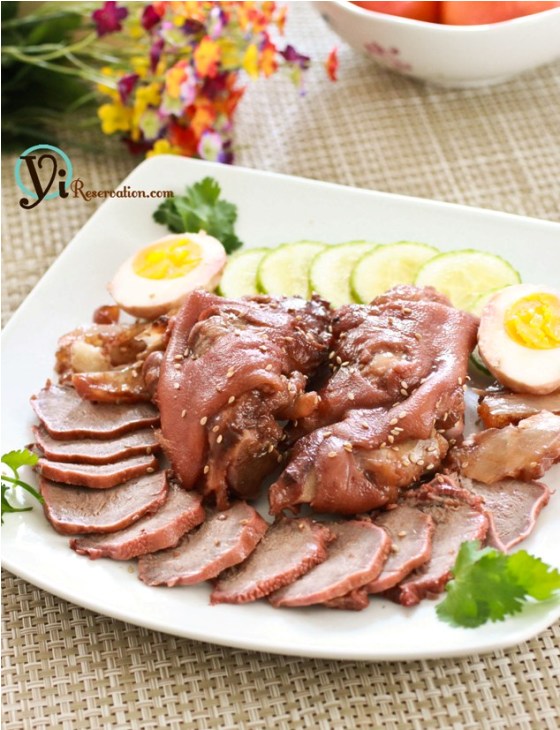
While I consider Chinese as my native language and English as my second language, my opportunities to use Chinese on the daily basis are rather limited.
Still, I am very grateful that I can read and write Chinese. It becomes especially handy when I discover a delicious authentic Chinese recipe and it only exists in Chinese 🙂
One fascinating aspect about Chinese language is that some of the oldest characters used today are pictogram which were once drawn or inscribed on hard objects such as bones and rocks to convey meanings.
For instance, the word 鹵 (pronounced lǔ) means a bag of salt. The ancient symbol of this word is precisely represented by a drawing of a bag of salt. Then after a few thousands later, the character became what is known Traditional Chinese.
From left to right: pictogram symbol, the form found on seal, the modern traditional character
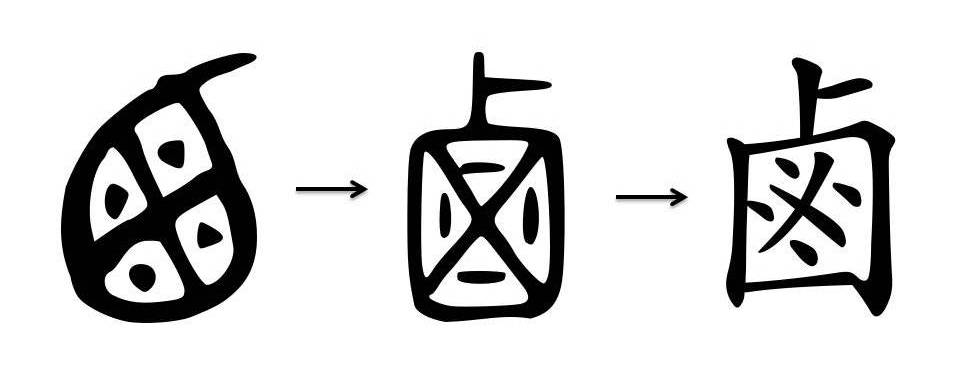
Image Source: Wikitionary
Now if you combine the water with a bag of salt, you’ll get the word 滷 (still pronounced lǔ), a noun and verb. Guess what this word means?
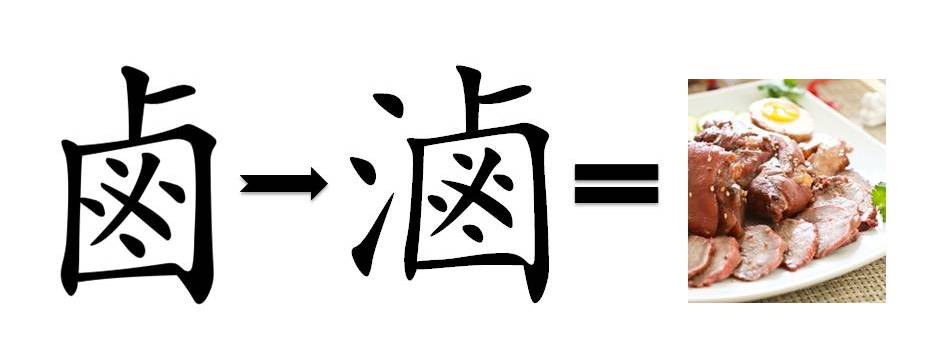
Bingo! Just as you expected, adding some water to the salt will give you brine (滷) and cooking food in the brine will yield something like 滷味(pronounced lu wei in Mandarin) or deliciously braised protein ingredients in aromatically spiced “brine”. Doesn’t this just make you want to learn Chinese? I think I just secretly discovered my teaching talent J
In a nutshell, the verb lu means is to slowly braise different kinds of ingredients in an aromatic liquid that’s made with soup stock, soy sauce, and many aromatic spices. The food prepared this way is called 滷味 (lu wei)
Obviously the real reason I am bringing up these words is that not only lu wei is one of the greatest Chinese cooking techniques in the history yielding countless regional variations; but it is also one of the must-served dishes in Chinese festival meals.
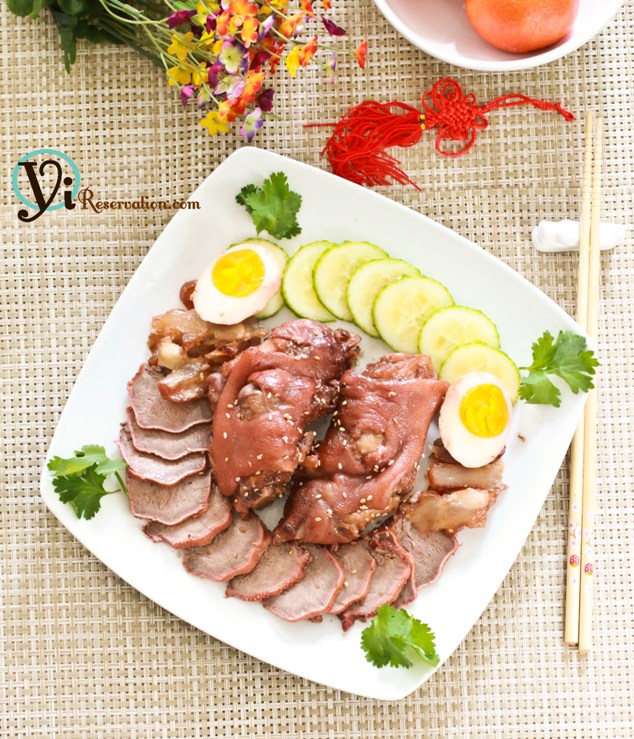
As I mentioned last week that Chinese New Year is just one week away, there is nothing better to serve some delicious lu wei or what I called food braised in aromatic brine (some translation calls it red cooking but I feel the translation doesn’t convey the essence of the dish) as an appetizer.
Given the rich history and extensive regional variation, this recipe is as simple as it can be. As the name suggests, not only the brine is salty and savory but it is also aromatic. The aroma therefore is the key and differentiating factor separates the good lu wei from bad one.
The aroma is achieved using a mix of various spices / dry herbs such as the more well known five spices. However this recipe calls for a lot more than just five spices. Below you’ll find a list of spices/ dry herbs commonly used and you can totally think this as the Chinese version of Ras El Hanout. (I’ve seen recipes call for over 30 spices/herbs with most of them unheard of).
Depends on your culinary culture and background, you might or might not recognize some of the spices. Chinese supermarkets sell the per-packaged spices for this dish. Get the individual spices to experiment around if you already know the basics.
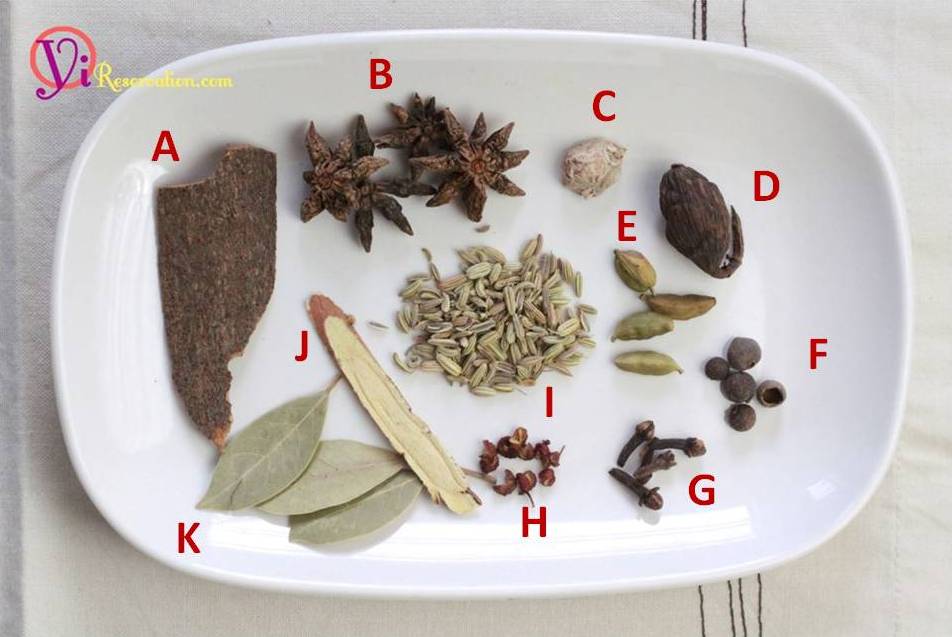
Chinese Ras El Hanout.
- A – Cinnamon Stick (桂皮)
- B – Star Anise (八角)
- C – Sand Ginger (山柰 or沙薑)
- D – Black Cardamom (草果)
- E – Green Cardamon (豆蔻)
- F – Allspice (多香果)
- G – Clove (丁香)
- H – Sichuan Peppercorn (花椒)
- I – Fennel Seed (小茴香)
- J – Liquorice (甘草)
- K – Bay Leaf (月桂葉)
Once you have found these spices (or some of them), you are 70% through the making of this dish. The rest is just to simply follow the remainder of the recipe. You can be flexible and creative with the kind of protein you want to braise. I have listed the common used ingredients in the recipe.
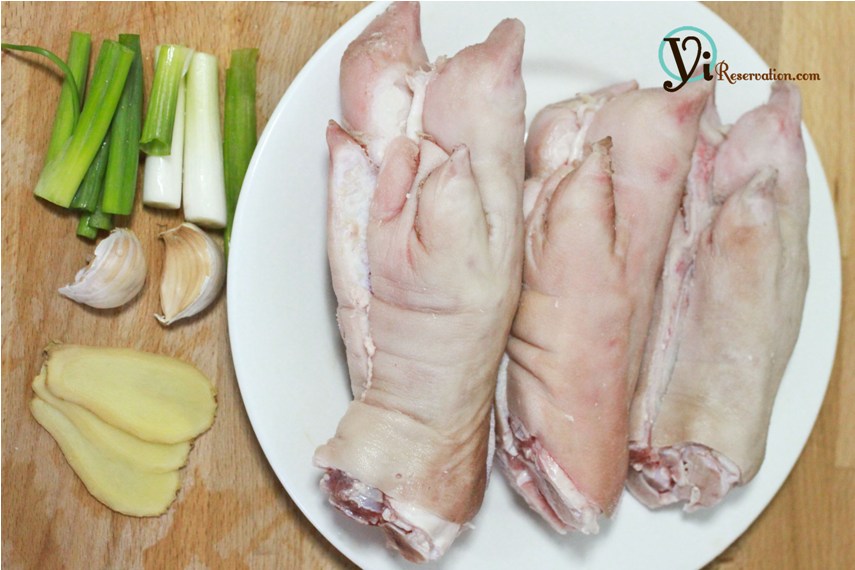
Step-by-Step Illustrations
Blanch the protein in boiling water for about 5 minutes.

Fry the scallion, ginger, and garlic and fry until aromatic.

Add the rest of the brine ingredients to make the brine.

Once it boils reduce the heat to simmer.

Soak the ingredients in the brine over night to get the best result.

Last thing, just in case you will be too busy celebrating Chinese New Year next week and skipping my last part of the Chinese New Year special post (but I suggest you still visit), I wish you all a Happy Year of Dragon!
| Lu Wei (滷味) – Braised Aromatic Goodness |
- 2 lb Protein (beef, beef tongue, beef tendon, pig trotters, chicken, duck, seafood, egg, bean curd, and etc)
- 3 slice Ginger
- 3 clove Garlic
- 1 cup cooking wine
- ½ cup Soy sauce + 2 tbsp dark soy sauce
- ½ cup Rock sugar
- Spices listed above (use as many different spices as you can find)
- 2.5 cup stock, water. Use less if using the existing brine (aka master brine)*
- Salt to taste
- Blanch the protein in boiling water for about 5 minutes. Rinse off the impurities under running water. Drain the water in a colander.
- To make the braising brine, heat up 2 tbsp of cooking oil. Add the scallion, ginger, and garlic and fry until aromatic. Add water or stock. If you have master brine* add to the cookware now. Add soy sauce, sugar, cooking wine, and spices. If you can’t find all the spices make sure you have at least star anise, cinnamon, and bay leaves. (In this recipe I use 2 inch of cinnamon, 4 star anise, 2 sand ginger, 1 black cardamom, 3 green cardamom, 4 clove, 3 bay leaves, and 1 tbsp of the rest of the spices.)
- Once the brine starts to boil, add the protein to the brine. Add the protein according to the time each ingredient takes to cook. Ingredients such as beef tendon and beef will take longer to cook so braise these first.
- Bring the food to boil and add salt to taste. If you use the master brine*, make sure you reduce the amount of salt. I like to add salt in three separate times to avoid being too salty. Reduce the heat and simmer with a lid on.
- Turn around the ingredients periodically to ensure the flavor is absorbed evenly. Simmer for 45 minutes to 3 hours depending on the ingredients. After done cooking, soak the ingredients in the brine over night to allow the flavor fully get into the center of each ingredient. Cool down the meat and slice the ingredients to your like. When serving, lightly brush the food with some sesame oil.
*I strongly encourage you to save the left brine for the next use. Just simply filter out all the dry stuff and store the brine in the freezer. This previous used brine is called master brine. The flavor of the brine gets better over time and usage.
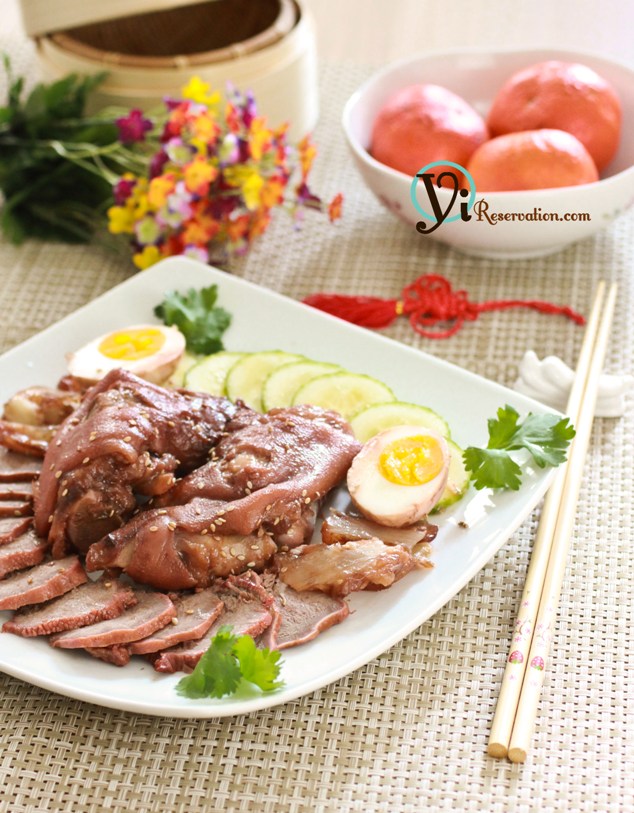
Warning: Use of undefined constant rand - assumed 'rand' (this will throw an Error in a future version of PHP) in /home/yirese5/public_html/wp-content/themes/yireservation/single.php on line 72
Warning: Parameter 2 to wp_hide_post_Public::query_posts_join() expected to be a reference, value given in /home/yirese5/public_html/wp-includes/class-wp-hook.php on line 287
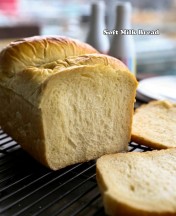
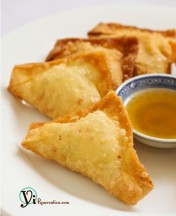
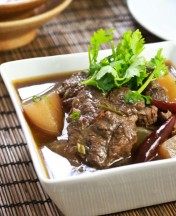
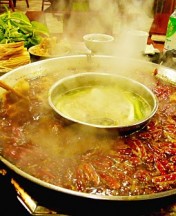
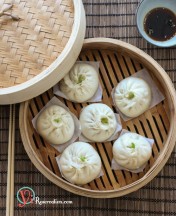
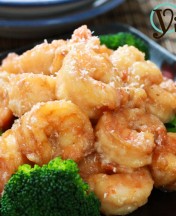
Pingback: How Long To Cook Pork Chops In Air Fryer? - Tips And Tricks In The Kitchen
Great recipe, I’ll try it soon. Just wondering what gives ti the red colour seen in your photos? Other recipes I’ve seen for char siu use red bean paste for the red colour.
Hello I was wondering when you list Allspice (多香果) if you meant – Chinese 5 spice, or allspice like this website lists https://www.thespruceeats.com/what-is-allspice-p2-995556
Also for Liquorice (甘草) do you use liquorice root or ground liquorice powder?
I’m so excited to make this! I have been looking for a recipe for this for a long time.
Thank you!
hi Janet, yes i was referring to the actual allspice as indicated in your link. For liquorice, i use roots. Hope this helps.
Hi Yi.
May I seek clarification on your recipe?
You mentioned you used 1tbsp of the rest of spices. You meant 1tbsp each type of spice or total 1tbsp?
Do you soak the cooked dish overnight in fridge or just out on tabletop? Thank you!
Sorry for getting back to you late. It should be 1tbsp of the rest of the spicy combined. And if it’s not too hot you can bring the brine and good to boil and turn off the heat, cover and leave on stovetop overnight.
Great information. Lucky me I came across your site by accident
(stumbleupon). I have saved as a favorite for later!
Pingback: Peppery Soup and Crispy Pork: Kuay Jab Nay Lek (ก๋วยจั๊บนายเล็ก)
Do you filter out the ginger and scallions before freezing or only the hard dry spices? When you use it again do you add a little liquid? Mine evaporated a little in the first cooking…
Hi Jennifer, thanks for trying my recipe. Yes I’d take filter out finger and scallions and some old spices before I store the liquid. When I reuse it, I add more liquid as well as more spices. I hope this answered your question.
Pingback: Chinese Food: A Portal to Chinese Culture | Waygo Blog – Waygo Visual Translator – Chinese to English Translator
Pingback: aromatic spice beginning with n - Food Recipe
Hi Yi, thanks for this post. I have a real homesickness for my favourite Taiwanese street food, which is also called 滷味, and where you can “pick and mix” different proteins, noodles and vegetables to have them boiled in the brine. I was wondering how I might create something similar at home — is your brine recipe pretty much the same thing?
I like the idea of cooking up a big batch of brine and then freezing it so I have it ready-made for nights when I want my own 滷味 (served directly in a plastic bag is optional 😉 ) and could just bring it to the boil and chuck in some veg, rice noodles and tofu!
Found a solution! With some help from Taiwanese friends, I found this product and I’m currently soaking dry tofu skin to make my own exciting Luwei! http://www.tomax.com.tw/pdt2.asp?area=1&cat=194&sn=258
Hi there, yes you can use this brine to cook all kinds of protein. If you plan to make vegetables too I’d use a separate pot of brine just so the flavors don’t mix. Hopefully the prepackaged spice bag worked for you:)
Thank u for the wonderful site. everything looks so good. Being home sick for a long time, finally decide to step into the kitchen to cure it starting with my stomach. Your website is so helpful even for a beginner like myself. I do have a question though, in chinese cooking, what is the difference btwn Lu and Hong shao (red braise). thank you again
hi bbgun, thanks for stopping my blog. In modern Chinese cooking, both lu and hong shao (red cook) refer to cooking ingredients in soy sauce and spice-based stock/sauce. It’s Lu when you cook ingredients with large amount of stock and the stock is kept and used for later use. On the other hand, in hong shao, the sauce is reduced and served as part of the dish. Also, traditionally, hong shao involves caramelizing sugar to add that red color hence the name red cook. This step is less essential in today’s homeworking due to health concern. I hope this helps. Thanks
Pingback: Chinese Food: A Portal to Chinese Culture | Cant Read Chinese
Pingback: Cooking Planit Spice Giveaway (over $100 value) | Yi Reservation
Pingback: Chinese Chive Dumplings 韭菜餃子 | Yi Reservation
Pingback: Sichuan Mapo Tofu | 麻婆豆腐 | Yi Reservation
Pingback: Spaghetti with Duck in Black Pepper Sauce | 黑椒烤鴨炒意粉 | Yi Reservation
Hi Yee, recipe sounds yummy. Is this the same recipe used to make the “cha dauns” or “tea eggs”? I would like to try it soon. I love learning to cook Chinese food but some websites don’t come close to cooking the authentic stuffs. You make cooking Chinese food seem so easy. Thanks.
Hi Carol, thank you for checking my site. Although I would not say cooking Chinese is all that easy, I am glad you’ve found the recipes helpful and demystifying. I make tea eggs with a similar but less complicated lu or brine. For the dry spices, I use tea (such oolong tea), star anise, cinnamon stick, bay leaves, Sichuan peppercorn. Then you can follow the rest of the recipe. Please let me know if you have any other questions. Please let me know how your tea eggs came out. Thanks.
Pingback: Taiwanese Minced Pork Sauce over Rice (肉燥飯) | Yi Reservation
Pingback: Eight-Treasure Rice (八寶飯) - Step by Step Recipe | Yi Reservation
Awesome explanation of the Chinese characters. Your aromatic goodness sounds delicious! It reminds me of a dish that we take during confinement using black sweet vinegar and lots of ginger and another braised dish using red bean curd and wood ears. They are all very tasty and I will have to cook both soon. Will be good in this cold weather.
Xin Nian Kuai Le!
Hi Biren, thanks for your visit and happy Chinese New Year!
wow that is delicious! i came over from biren’s, because your comment included your last post and “braised aromatic goodness” sounds simply too good to miss! great photos and step-by-step tutorials! fab that you can do this with all kinds of protein too, I love to experiment with “weird” animal parts hehe, so may try this with the next trotter I get, or maybe even tongue or ear!
Hi shuhan, thanks for stopping! If you like “weird” stuff you are really in for a treat! consider braising ingredients like thick beef tripes, pork intestinges and tongues. I am drooling as we speak 🙂
Great photos! Love the post & the recipe. Happy Chinese New Year in advance to you and your family.
Happy Chinese New Year to you Health Bee!
First, thank you for visiting my site 🙂 Love how you braise, it sure look very tasty. Thanks for the step-by-step pictures.
Have a great week Yi!
Thanks Juliana! Hope you will give it a try!
Wow, your 滷味 looks awesome! Thanks for the detail explanation , I especially love your pictogram symbol one. 🙂 Really appreciate your picture on the spices as I’ve never seen the Sand Ginger and Black Cardamon before. That makes it easier for me when I need to look for them. Thanks for the recipe and early Happy Chinese New Year to you. 🙂
Thanks Amy. Happy New Year to you as well!
Looks delicious as usual! I will be following your site even in France!
Hi Yves, thanks for stopping by and saying hi. I am really happy that you’ll still be checking out this site. We’ll have to stay in touch!
Definitely!
Bravo! Perfect braised dish with interesting explanation of pictogram 🙂
Thanks tigerfish! It was fun to talking about Chinese and Chinese food at the same time 🙂
Yi, this looks wonderful! I also love your write up about Chinese writing and origin. I am currently trying to teach my little girl how to write Chinese, and it’s not an easy task since we don’t use Mandarin much in everyday life…
Hi Jeno, thanks for stopping by. Yeah I totally understand what you mean by not using Mandarin often enough…I’d hate to loose my ability to read and write Chinese.